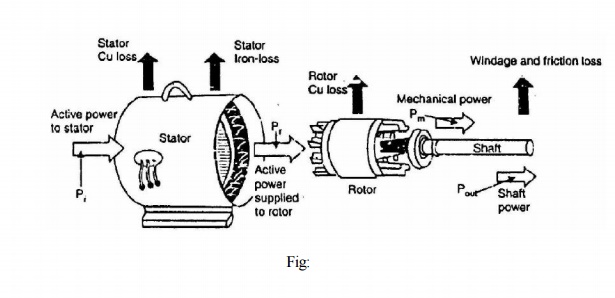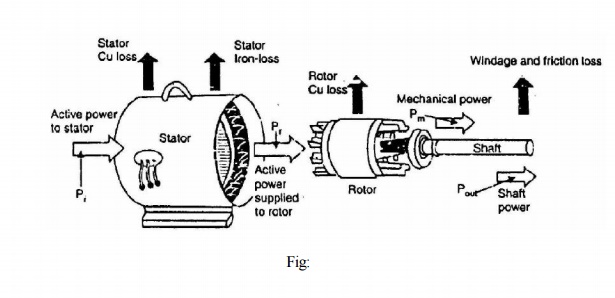Chapter: Electrical machines : Starting and Speed Control of Three Phase Induction Motor
Power Stages in an Induction Motor

Power Stages in an Induction Motor
The input electric power fed to the stator of the motor is converted into mechanical power at the shaft of the motor. The various losses during the energy conversion are:
1. Fixed losses
(i) Stator iron loss
(ii) Friction and windage loss
The rotor iron loss is negligible because the frequency of rotor currents under normal running condition is small.
2. Variable losses
(i) Stator copper loss
(ii) Rotor copper loss
Fig: 3.37 shows how electric power fed to the stator of an induction motor suffers losses and finally converted into mechanical power.

The following points may be noted from the above diagram:
(i) Stator input, Pi = Stator output + Stator losses
= Stator output + Stator Iron loss + Stator Cu loss
(ii) Rotor input, Pr = Stator output
It is because stator output is entirely transferred to the rotor through air-gap by electromagnetic induction.
(iii) Mechanical power available, Pm = Pr - Rotor Cu loss
This mechanical power available is the gross rotor output and will produce a gross torque Tg.
(iv) Mechanical power at shaft, Pout = Pm - Friction and windage loss
Mechanical power available at the shaft produces a shaft torque Tsh.
Clearly, Pm - Pout = Friction and windage loss.
Related Topics